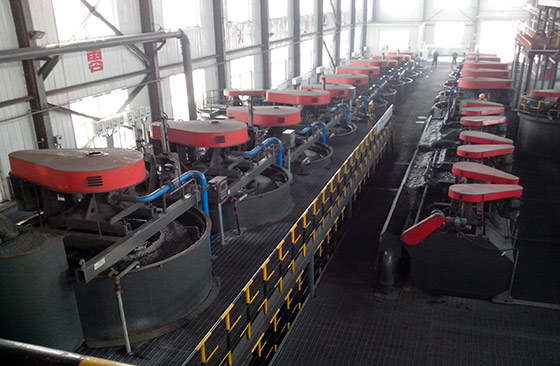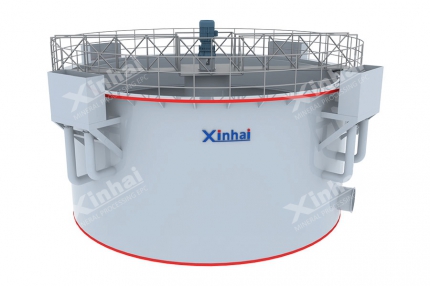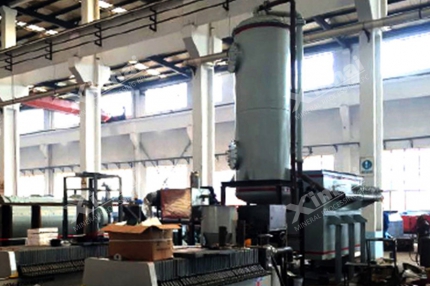Gold, with its unique value and rarity, has always been pursued by mankind. The mining and refining process of gold is complex and delicate, and its quality is directly related to economic benefits and environmental impact. The effect of gold mine processing should pay attention to indicators such as gold mine recovery rate, ore grade, impurity removal, gold ore enrichment ratio, etc. These indicators not only determine the purity and value of gold products, but are also important standards for measuring whether the mineral processing process is efficient and environmentally friendly. This article will introduce several key indicators in the gold beneficiation process.

Use the table of contents below to navigate through the guide:
01Gold mine grade
Grade is a quantitative indicator for measuring the gold content in ore and an important parameter for evaluating the effect of the mineral processing process. It is usually measured in g/t or g/m³, which visually reflects the concentration of gold in the ore. At all stages of gold beneficiation, the grade of concentrate is the key to evaluating the efficiency and economy of beneficiation. A high-grade concentrate means that gold is effectively separated from the ore with less loss during the beneficiation process, thereby increasing overall resource recovery.
In order to ensure the economic feasibility of the mineral processing process, the grade of the concentrate usually needs to meet or exceed a certain standard, such as 30 g/t or 40 g/t. These standards are comprehensively determined based on factors such as the original grade of the ore, the complexity of the mineral processing process, and market demand. If the grade of the concentrate is lower than these predetermined indicators, it may mean that the beneficiation process has not reached its full potential, or that the gold content of the ore itself is low and requires further optimization or the use of more advanced purification technology.

In actual operation, if the grade of the concentrate does not meet the standard, it may be necessary to adjust the mineral processing process, such as improving the crushing and grinding process of the ore, optimizing the flotation conditions, or using methods such as chemical leaching to increase the gold extraction rate. In addition, physical or chemical methods can also be considered to further enrich the concentrate, such as gravity separation, magnetic separation, cyanide leaching, etc., to improve the final recovery rate of gold. Through these measures, the efficiency and economic benefits of the gold beneficiation process can be ensured, while also helping to enhance the market competitiveness of gold products.
02Gold mine recovery rate
Recovery rate plays a vital role in the field of gold mineral processing. It is a key indicator to evaluate the efficiency of mineral processing technology and resource utilization efficiency. A high recovery rate not only means more gold is successfully extracted, but also means less waste of resources, which has far-reaching implications for the sustainable use of resources.

In actual operations, the gold recovery rate is usually set at a higher standard, such as 85% or above, to ensure the economic benefits and environmental friendliness of the mineral processing process. However, if the recovery rate fails to meet this standard, it may indicate that there are inefficiencies in the beneficiation process, such as improper selection of flotation agents, unsuitable flotation conditions, or imprecise equipment operation.
In this case, mineral processing engineers need to conduct a comprehensive analysis of the entire mineral processing process to find out the key factors affecting the recovery rate, and carry out targeted technical optimization and process adjustments. This could include improving the ore’s pre-treatment steps, optimizing flotation parameters, using more advanced extraction techniques or improving tailings treatment methods. Through these measures, the recovery rate of gold can be significantly improved, thereby ensuring the efficiency of the mineral processing process and the rational utilization of resources.
03Gold mine enrichment ratio
Enrichment ratio is a key parameter to evaluate the performance of the mineral processing process, which directly reflects the enrichment efficiency of the target element (in this case, gold) during the mineral processing process. This ratio is calculated by comparing the content of specific elements in raw ore and concentrate, and it can visually demonstrate the element enrichment ability of the mineral processing process.

When the enrichment ratio is greater than 1, it indicates that during the mineral processing process, gold or other valuable elements are effectively separated from the raw ore and enriched in the concentrate, thereby achieving the purpose of reducing the element content in the raw ore. This enrichment effect is a sign of the success of the mineral processing process, because it means that resources are effectively used, while reducing the content of valuable elements in the tailings and reducing resource waste.
On the contrary, if the enrichment ratio is less than 1, it usually means that the mineral processing process failed to effectively enrich the target elements, and the element content in the raw ore has not been reduced as expected. This may be due to insufficient design of the mineral processing process, improper operation or poor equipment performance. In this case, the mineral processing process needs to be reviewed and optimized to improve the enrichment ratio and ensure the efficiency and effectiveness of the mineral processing process.
Monitoring and adjustment of the enrichment ratio are crucial to the economic benefits of gold beneficiation. A high enrichment ratio not only improves gold recovery and reduces production costs, but also reduces environmental impact by reducing the generation and disposal of tailings. Therefore, the enrichment ratio is one of the important indicators to measure whether gold mineral processing meets the standards. It guides mineral processing engineers to continuously improve the process to achieve rational utilization of resources and reduce the impact on the environment.
04Impurity removal of gold mine
In the fine process of gold beneficiation, the removal of impurity elements is a key link to ensure the purity and quality of gold. In addition to gold, ores often contain impurity elements such as silver, sulfur, and copper. The presence of these elements will not only reduce the purity of gold, but may also cause technical problems in the subsequent refining process and affect the market value and application scope of gold. Therefore, effective measures must be taken during the mineral processing process to minimize the content of these impurity elements.

When evaluating whether gold mineral processing meets standards, the content of impurity elements in the concentrate is an important consideration. For example, silver and copper may form insoluble alloys during subsequent refining steps, while sulfur may form sulfides with gold at high temperatures, both of which can negatively affect gold purity. An ideal beneficiation process should be able to minimize the content of these impurity elements to ensure the purity and quality of gold.
In addition, the physical and chemical properties of the concentrate are also important factors affecting its market value. The size of the particles affects the convenience and cost of subsequent processing, the moisture content is related to the cost of transportation and storage, and the pH value affects the stability of gold and the safety of subsequent processing. Therefore, a successful mineral processing process must not only remove impurity elements, but also ensure that the physical and chemical properties of the concentrate meet industrial standards to facilitate subsequent refining and processing. By comprehensively considering these factors, the overall efficiency and economic benefits of gold mineral processing can be improved, while also laying a solid foundation for the final quality of gold products.
To sum up, the criteria for judging whether gold mine processing meets the standards are multi-dimensional, covering many aspects such as gold grade, recovery rate, and concentrate quality. Gold element content is a direct indicator to measure the effect of mineral processing, which reflects the degree of gold enrichment during the mineral processing process. Combining these standards can not only enhance the economic value of the gold industry, but also promote the development of the gold industry in a greener and more sustainable direction by reducing resource waste and environmental pollution.
05Part of Xinhai Mining gold ore concentrator projects
1. Guinea 15000tpd gold ore concentrator

2. Guinea 6000tpd gold ore concentrator

3. Shandong 6000tpd gold ore dressing plant

4. Mongolia 1.2 million tpa gold concentrator

5. Henan 3000tpd gold ore dressing plant

6. Heilongjiang 2000tpd gold ore dressing plant

7. Laos 2000tpd gold ore dressing plant

8. Tanzania 1200tpd gold ore concentrator

9. Burundi 1200tpd gold ore concentrator

10. Gansu 1000tpd gold ore dressing plant



 marketing@ytxinhai.com
marketing@ytxinhai.com  0086 13810327080
0086 13810327080 






































































































 CHAT
CHAT MESSAGE
MESSAGE
















